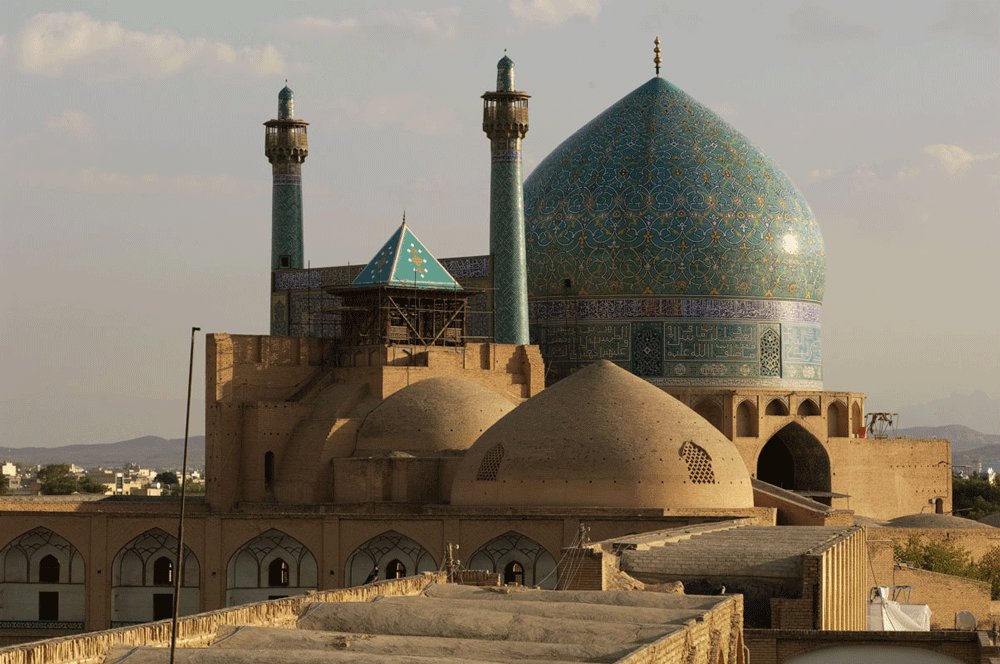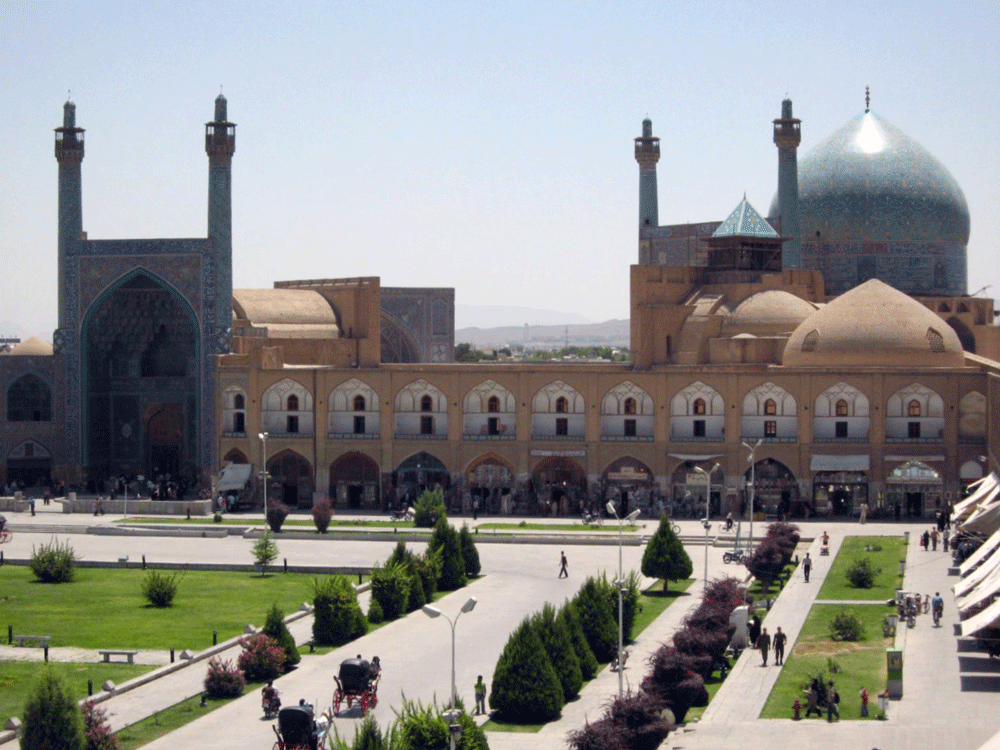Imam Mosque, Masterpiece of Architecture in Isfahan

TEHRNA _ The distinct feature of Persian domes, which separates them from those domes created in the Christian world or the Ottoman and Mughal empires, was the colorful tiles, with which they covered the exterior of their domes, as they would on the interior.
The Imam Mosque of Isfahan is one of the everlasting masterpieces of architecture in Iran. In fact, its construction began in 1611, and its splendor is mainly due to the beauty of its seven-color mosaic tiles and calligraphic inscriptions.
Located in Isfahan’s attractive Naqsh-e Jahan square, Imam Mosque, with the area of about 12,264 Esq., is a huge structure, containing 18 million bricks. It employs the new haft rangi (seven-color) style of tile mosaic. In earlier Iranian mosques the tiles had been made of faience mosaic, a slow and expensive process where tiny pieces are cut from monochrome tiles and assembled to create intricate designs.

In building this structure, the architects also employ a great deal of marble, which were gathered from a marble quarry in nearby Ardestan.
Throughout the building, from the entrance portal and to the main building, the lower two meters of the walls has been covered with beige marble, with beautifully carved poles at each side of every doorway and carved inscriptions throughout. Above this level begins the mosaic tiles that cover the rest of the building, Irannewsdaily wrote.
As with Ivan, the introduction of domes into Islamic architectural designs was done by the Persians. The Persians had constructed such domes for centuries before, and some of the earliest known examples of large-scale domes in the world are found in Iran. The Safavid Muslims borrowed heavily from pre-Islamic knowledge in dome-building; i.e. the use of squinches to create a transition from an octagonal structure, into a circular dome. To cover up these transition zones, the Persians built rich networks of stalactites. Thus, came also the introduction of this feature into Persian mosques.
The distinct feature of Persian domes, which separates them from those domes created in the Christian world or the Ottoman and Mughal empires, was the colorful tiles, with which they covered the exterior of their domes, as they would on the interior. These domes soon numbered dozens in Isfahan, and the distinct, blue-colored shape would dominate the skyline of the city.
Reflecting the light of the sun, these domes appeared like glittering turquoise gem and could be seen from miles away by travelers following the Silk Road through Persia. Reaching 53 meters in height, the dome of the Masjed-e Imam would become the tallest in the city when it was finished in 1629. It was built as a double-shelled dome, with 14 meters spanning between the two layers, and resting on an octagonal dome chamber.
In the center of the great prayer hall look out for a few black paying stones underneath the dome, which when stamped upon create seven clear echoes. The fact that sound is equally carried to all parts of the dome chamber and cloisters on each side as well as to the courtyard and the lateral porches indicates that four centuries ago Iranian architects were able to produce buildings provided with acoustics, not inferior to those of any modern building.
Source: Mehrnews Agency
